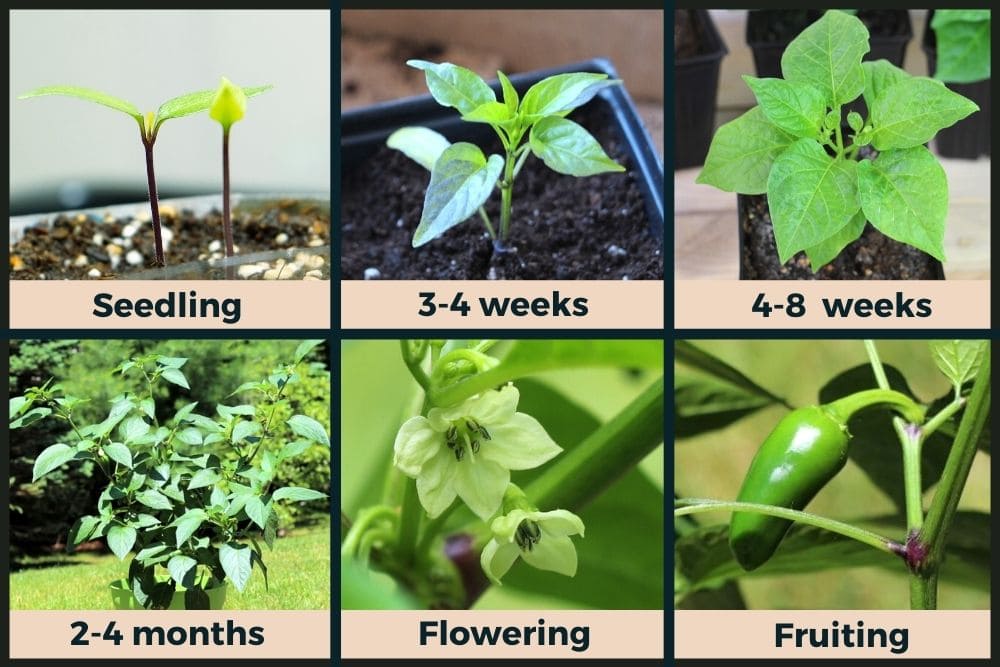

Place plants outside where they will receive wind protection and a couple hours of sunlight. Reduce watering when plants are four to five inches tall, and six to eight weeks old. Pinch off the clusters of flower buds until just before you will set the plants out in the garden. 
Pepper plants may start to flower while still indoors.

Without enough bright light directly overhead, the stems of the little plants will elongate and lean over.

Thin or transplant seedlings after true leaves appear so that seedlings are two to three inches apart.Provide bright overhead light for the seedlings.Monitor potting mix moisture, as heating mats will dry the mix out faster. Use a heating mat to keep the flat at 80☏ to 90☏ until seedlings emerge.Plant seeds one-fourth inch deep in flats containing sterile, soilless germination mix.
#JALAPENO PEPPER SEEDLING FULL#
For a full list of varieties, see the Cornell University Disease Resistant Vegetable Varieties page. Some garden centers and big box stores include this information in their signage. Seed catalogs use codes to note which varieties of peppers are resistant or tolerant to different diseases. A tolerant variety will become diseased, but spread of disease will be slower and the infection will be less serious. A resistant variety will not become diseased. If you have previously identified disease issues in the garden, choosing a resistant or tolerant variety is a good way of preventing the disease in the future. In general, smaller-fruited peppers are more tolerant of both cool and hot temperatures, so while you may enjoy the challenge of growing big bell peppers, planting some smaller sweet peppers will result in a more satisfying harvest. Look for peppers described as “widely adapted” and “cold tolerant.” Some seed catalogs will classify their offerings, pointing out varieties that are the best choices for northern gardeners. Feed plants weekly with a high potash tomato fertiliser once first fruits have set.Check the “Days to Maturity” or “Days to Harvest” estimate in the seed or plant description. Plant in final position from early June when there is no further risk of frost and protect from biting winds. For Outdoor Crops: Gradually acclimatise plants to outdoor conditions for 10-15 days before planting one plant per 20cm (8in) or 2 litre pot, or a larger container on the patio. Growing Information:įor Indoor Crops: Plant 2 plants per growbag or individually into 20cm (8in) pots or 2 litre pot. Reduce temperature and maintain at 15C (59F). Transplant seedlings when large enough to handle into 7.5cm (3in) pots. Place in a propagator or seal container in a polythene bag and keep at 25C (77F) until after germination which takes up to 14 days. Sow seed on the surface of a good, free-draining damp seed compost and cover with a fine sprinkling of compost or vermiculite. Make sure the soil is around 80-85 degrees for proper germination. For use in a variety of dishes - not just sliced on your favourite pizza! Sowing Information: We recommend starting pepper seeds indoors roughly 8 weeks before your last danger of frost. Dark green, turning bright red fruits are 8-10cm (3-5in) long, thick-walled and slightly tapered with blunt ends. Widely known as the ‚pizza pepper‚, this jalape√±o is the most widely used and popular selection.








 0 kommentar(er)
0 kommentar(er)
